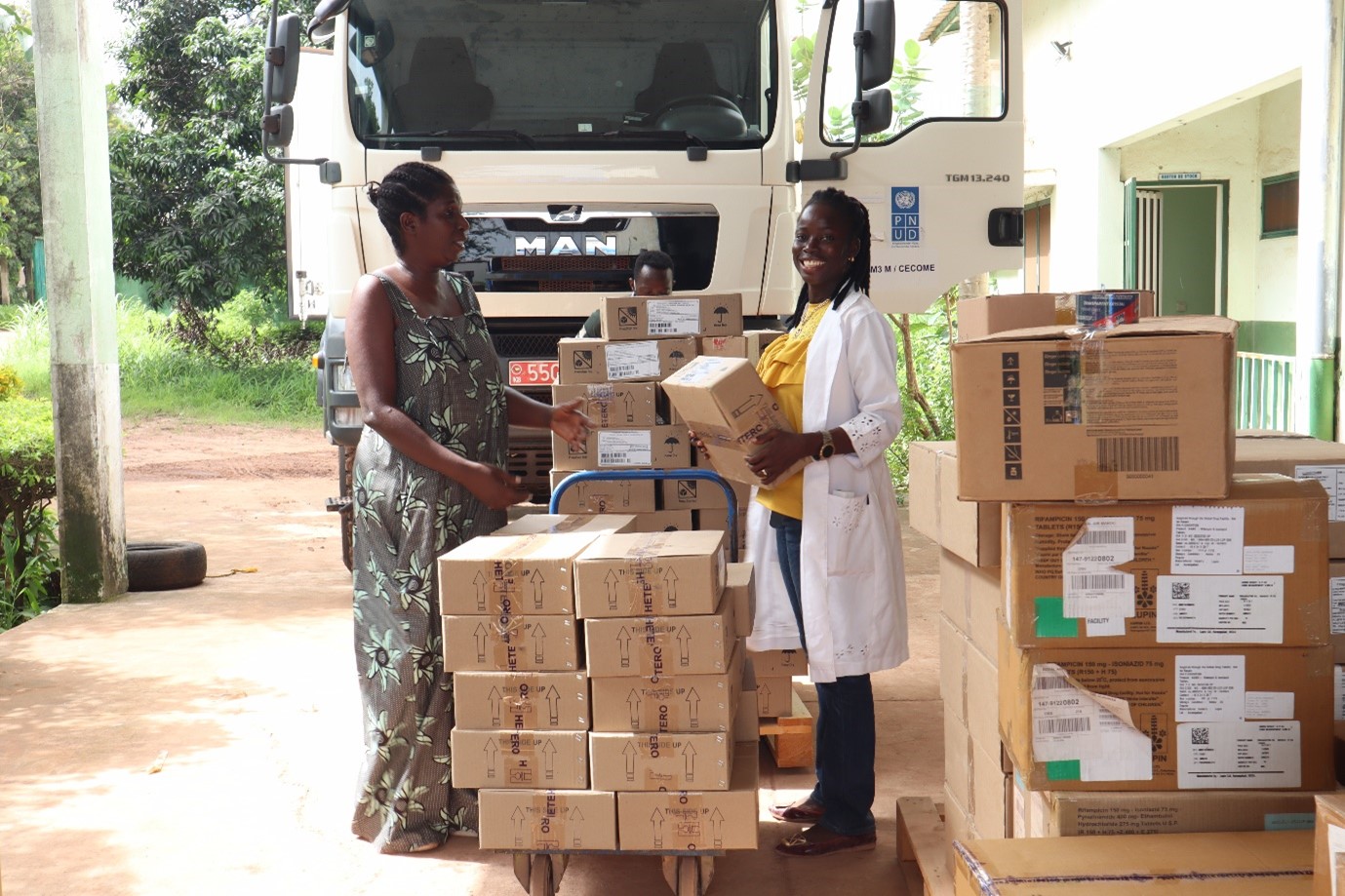Twelve Pills to Save a Life
September 14, 2022

2022 seasonal malaria preventive chemotherapy campaign in Guinea-Bissau
Malaria in Guinea-Bissau is an endemic disease with stable transmission and high prevalence, according to World Health Organisation data. It is also responsible for a high proportion of deaths in the country and, in fact, as indicated in the WHO World Malaria Report 2021, the country recorded an increase in mortality rate of between 5% and 25% in 2020 compared to 2015. Transmission is most intense during and after the rainy season, between June and November, and it is precisely at this time when UNDP Guinea-Bissau, in collaboration with the National Malaria Control Programme (PNLP, for the acronym in Portuguese) under the Ministry of Public Health of the Government of Guinea-Bissau and with the fundamental support of The Global Fund, launches the 2022 Seasonal Malaria Chemoprevention Campaign, the seventh campaign since the first one in 2016 supported by MSF Spain.
Seasonal malaria preventive chemotherapy is the combined use of medicines recommended by the World Health Organisation to prevent malaria infections and their consequences. It involves administering a full course of Amodeaquina and Sulphadoxina Perimetamina to vulnerable populations over three days per month at the period of highest malaria risk, which in Guinea-Bissau coincides with the months between August to November, during the rainy season, in the four regions with the highest malaria disease burden.
In 2020, Africa accounted for 95% of all malaria cases worldwide and 96% of deaths, and 80% of these malaria deaths were among children under five years of age. In Guinea-Bissau, as in other African countries, they are a highly vulnerable group and that is why the campaign's efforts are focused on protecting them. As malaria is among the leading causes of death among children in the country, more than 120,000 kids under five years of age are the target group that will receive preventive treatment over the next four months. “The campaign is divided into four rounds, one each month from August to November, and in each phase each child is given three doses of the medicine over the course of three consecutive days," explains Dr Paulo Djata, head of the Ministry of Public Health National Malaria Control Programme sub-recipient unit. “We also do Rapid Diagnostic Tests in suspected cases of infection and give the children treatment in case they test positive, and we provide a card with all the information and data about their participation in the prevention campaign, while data is entered into tablets”.
Although the campaign starts in August, the preparations and logistical co-ordination of activities and, above all, the purchase, storage, and distribution of medicines begins one year earlier. The Drug Purchase Centre (CECOME) is where all the medicines and tests are stored and then sent to the four regions where the campaign will be implemented in the country: Bafata, Bolama, Gabu, and Tombali, which have the highest prevalence rates of the disease.
Malaria drugs stored in Guinea-Bissau
Community health workers are responsible for the administration and the monitoring of the treatment, with their health district managers ensuring that the drugs reach all the over 120,000 children under five years old. They are trained at the beginning of each campaign and carry out the door-to-door distribution, in a COVID-19 risk avoidance manner, filling in the data of each case for follow-up. "There is a monitoring system using coloured bracelets that we put on the children according to the doses they have taken, and we also mark with chalk on the doors of the houses how many children there are in the house and how many of those children are taking the medicines. Sometimes they are not at home when the community health workers pass, but the four phases are designed precisely for these cases, because protection is already guaranteed with three doses”, Dr Djata says. This year, 59 health district managers are responsible for training almost 2,000 health workers in their respective areas, so the work cascades from national to regional to local level. All the data collected in the field is transmitted via tablets, and the University of Oslo's DHIS2 platform is used to monitor, evaluate, and improve procedures, so that since the first campaign was implemented in 2016 until now, the whole process has been running smoothly and both the PNLP and the four Regional Health Directorates are becoming more and more autonomous. On the ground, UNDP assists with payment of workers via mobile money, monitoring and evaluation, monthly evaluations, and transport logistics.
Thus, the campaign continues to work with the ambition to care for the most vulnerable, to leave no one behind and to ensure that twelve pills are enough to protect the lives of tomorrow's Bissau Guineans.

 Locations
Locations